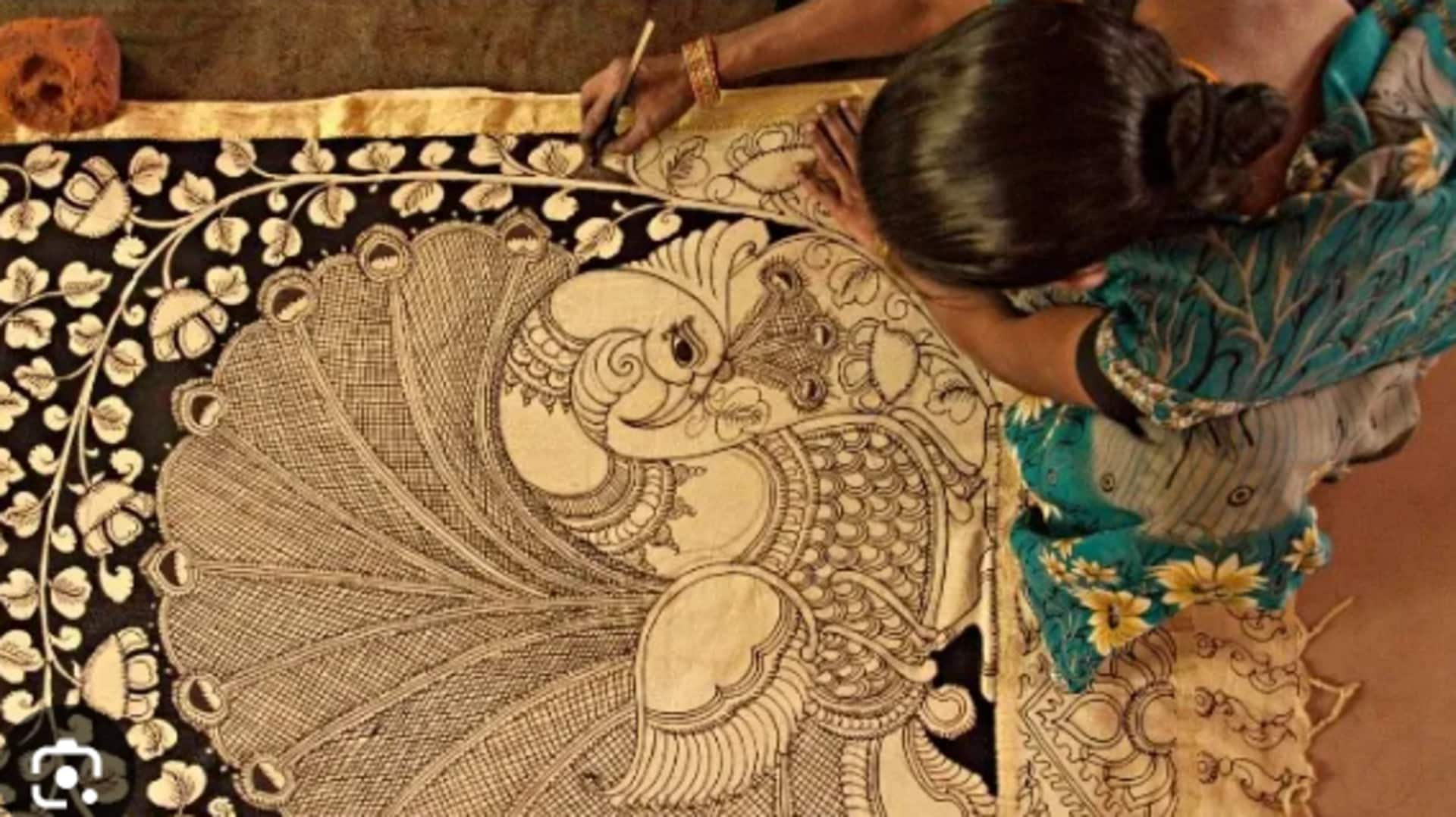
Discovering kalamkari: An intricate Indian textile art
What's the story
Another traditional Indian textile art that is famous for its intricate designs and storytelling is kalamkari. This art form, from Andhra Pradesh and Telangana, crafts detailed patterns on fabric with natural dyes. The term kalamkari is derived from the Persian words kalam (pen) and kari (craftsmanship). This ancient craft involves a painstaking process of drawing with a bamboo pen and dyeing the fabric in vibrant colors.
#1
Historical roots of kalamkari
Kalamkari dates back over 3,000 years. Originally employed to illustrate stories on temple walls, it became a popular textile art form during the Mughal period. Artisans would narrate stories from Hindu epics such as Mahabharata and Ramayana through their designs. The craft flourished under royal patronage, which enabled its proliferation throughout India and beyond.
#2
Techniques involved in kalamkari
The process of creating kalamkari involves several steps. It begins with preparing the cotton fabric by soaking it in a mixture for hours. After it dries, artisans sketch intricate designs with bamboo pens dipped in natural dyes (made from plants and minerals). Each color application requires washing and drying before another layer is added, ensuring vibrant hues.
#3
Natural dyes used in kalamkari
Natural dyes form an inseparable part of kalamkari's charm. The artisans use things like indigo for blue shades, pomegranate peels for yellow tones, and iron filings mixed with jaggery for black outlines. Apart from making the piece visually appealing, these eco-friendly dyes also ensure that no two pieces are exactly the same, as there will always be slight differences in color intensity.
#4
Modern adaptations of kalamkari
In recent years, the revival of kalamkari has been observed, with designers incorporating it into modern-day fashion lines or home decor products like cushion covers or wall hangings. This adaptation preserves the traditional techniques while introducing them to new global audiences who appreciate sustainable artistry combined with cultural heritage storytelling through textiles.